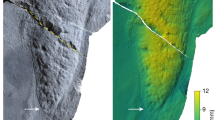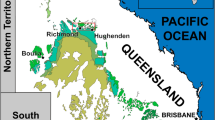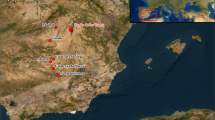Abstract
Sometimes referred to as sea unicorns, narwhals (Monodon monoceros) are Arctic cetaceans which throughout history have been revered as unique and mystical animals. In pre-nineteenth century societies, the long, up to 2 m in length, counterclockwise spiralling tooth of the male narwhal was thought to be the ‘tusk’ or alicorn of the legendary unicorn1,2. Alicorns were also thought1,2 to possess a variety of powers such as being able to detect and prevent poisoning. During the fifteenth and sixteenth centuries, narwhal tusks had a value of ∼10 times their weight in gold3, and thus they were often used to settle debts. Extensive hunting by seventeenth–twentieth century European and American whalers probably caused short-term reductions, but apparently no long-term effects, in the narwhal population4. Only Eskimos continue to hunt narwhals mainly for their tusks, although they also consider the skin (muktuk) a delicacy3. Many recent studies of narwhals have been concerned with their distribution, abundance, life cycle, and behaviour4–11 in the hope of aiding the management of this exploited species. Yet little is known about the population dynamics of narwhals, because determining the age of any particular animal is difficult. We report here that the extent of aspartic acid racemization in narwhal teeth provides a means for determining the age of narwhals. This method may be particularly useful for mature females, the ages of which have previously been difficult or impossible to determine.
This is a preview of subscription content, access via your institution
Access options
Subscribe to this journal
Receive 51 print issues and online access
$199.00 per year
only $3.90 per issue
Buy this article
- Purchase on Springer Link
- Instant access to full article PDF
Prices may be subject to local taxes which are calculated during checkout
Similar content being viewed by others
References
Shepard, O. The Lore of the Unicorn (Barnes and Noble, New York, 1967).
Arvy, L. Acta zool. Path. Antverp. 73, 43–118 (1978).
Reeves, R. Defenders 51, 222–227 (1976).
Mitchell, E. & Reeves, R. R. Rep. int. Whaling Comm. 31, 645–682 (1981).
Newman, M. A. in Marine Mammals of Eastern North Pacific and Arctic Waters (ed. Haley, D.) 138–144 (Pacific Search Press, Seattle, Washington, 1978).
Davis, R. A., Richardson, W. J., Johnson, S. R. & Renaud, W. E. Rep. int. Whaling Comm. 28, 209–215 (1978).
Mansfield, A. A., Smith, T. G. & Beck, B. J. Fish. Res. Bd. Canada 32, 1041–1046 (1975).
Finley, K. J., Davis, R. A. & Silverman, H. B. Rep. int. Whaling Comm. 30, 459–464 (1980).
Silverman, H. B. & Dunbar, M. J. Nature 284, 57–58 (1980).
Best, R. C. Can. J. Zool. 59, 2386–2393 (1981).
Finley, K. J. & Miller, G. W. Rep. int. Whaling Comm. 32, 449–460 (1982).
Perrin, W. F. & Myrick, A. C. (eds) Rep. int. Whaling Comm. Spec. Iss. 3, 1–50 (1980).
Gambell, R. Discovery Rep. 35, 199–358 (1972).
Best, P. B. S. Afr. J. Sci. 72, 216–218 (1976).
Gurevich, V. S., Stewart, B. S. & Cornell, L. H. Rep. int. Whaling Comm. Spec. Iss. 3, 165–169 (1980).
Hay, K. A. Rep. int. Whaling Comm. Spec. Iss. 3, 119–132 (1980).
Clark, J. W. Proc. zool. Soc. Lond. 1871, 42–58 (1871).
Helfman, P. M. & Bada, J. L. Nature 262, 279–281 (1976).
Bada, J. L. & Brown, S. Trends biochem. Sci. 5, III–V (1980).
Bada, J. L., Brown, S. & Masters, P. M. Rep. int. Whaling Comm. Spec. Iss. 3, 113–118 (1980).
Bada, J. L. Earth planet. Sci. Lett. 55, 292–298 (1981).
Masters, P. M., Bada, J. L. Adv. Chem. Ser. No. 171, 117–138 (1978).
Masters, P. M. Calcif. Tissue Int. 35, 43–47 (1983).
Liardon, R. & Jost, R. Int. J. Peptide Protein Res. 18, 500–505 (1981).
Author information
Authors and Affiliations
Rights and permissions
About this article
Cite this article
Bada, J., Mitchell, E. & Kemper, B. Aspartic acid racemization in narwhal teeth. Nature 303, 418–420 (1983). https://doi.org/10.1038/303418a0
Received:
Accepted:
Issue Date:
DOI: https://doi.org/10.1038/303418a0
This article is cited by
-
Chirality amplification by desymmetrization of chiral ligand-capped nanoparticles to nanorods quantified in soft condensed matter
Nature Communications (2018)
-
The use of protein characteristics to assess the retrievability of ancient DNA from ancient bones
International Journal of Anthropology (2002)
Comments
By submitting a comment you agree to abide by our Terms and Community Guidelines. If you find something abusive or that does not comply with our terms or guidelines please flag it as inappropriate.



